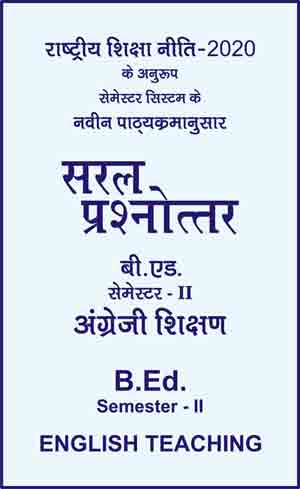|
बी एड - एम एड >> बीएड सेमेस्टर-2 अंग्रेजी शिक्षण बीएड सेमेस्टर-2 अंग्रेजी शिक्षणसरल प्रश्नोत्तर समूह
|
5 पाठक हैं |
||||||
बीएड सेमेस्टर-2 अंग्रेजी शिक्षण - सरल प्रश्नोत्तर
Question- What do you know about the history and development of OERs?
Ans.
OER and the open movement have recently evolved. They in many ways challenge the age-old educational traditions and conventions. The reason behind has been the pervasiveness of the internet and the ability to copy and distribute digital content. It all began in 1999 when the university of Tubingen (Germany) and the Open University (UK) released some educational resources for free.
However, the most commonly known OER initiative came from the Massachusetts Institute of Technology (USA) in 2001. By 2002, it had released 32 courses with open licenses and set a precedent in terms of openers of university courseware. The term OER was coined in 2002 when UNESCO convened the Forum on the Impact of Open Courseware for Higher Education in Developing Countries. Since then, many other education service providers around the world have used open licenses and the internet to share teaching and learning resources.
The integration of OER into national policy is an ongoing and slow process, but there have been successes in countries such as the USA, South Africa, Kenya, Ghana, Poland, The Netherlands, The UK. It was adopted as a policy in 2013 by Antigua and Barbuda within the framework of its national policy on Information and Communication Technology (ICT) in education. In 2014, the National Mission on Education through ICT (NMEICT) in India adopted an open license policy for all of its outputs, releasing as OER all content generated with its funding.
Significant in terms of broadening the reach of education, Stanford university in 2010 offered a Massive Open Online Course (MOOC), attracting hundreds of thousands of students for a free course. While MOOCs continue to attract both praise and criticism, the concept still interests education experts, especially those developing strategies to support very large number of students.
|
|||||













